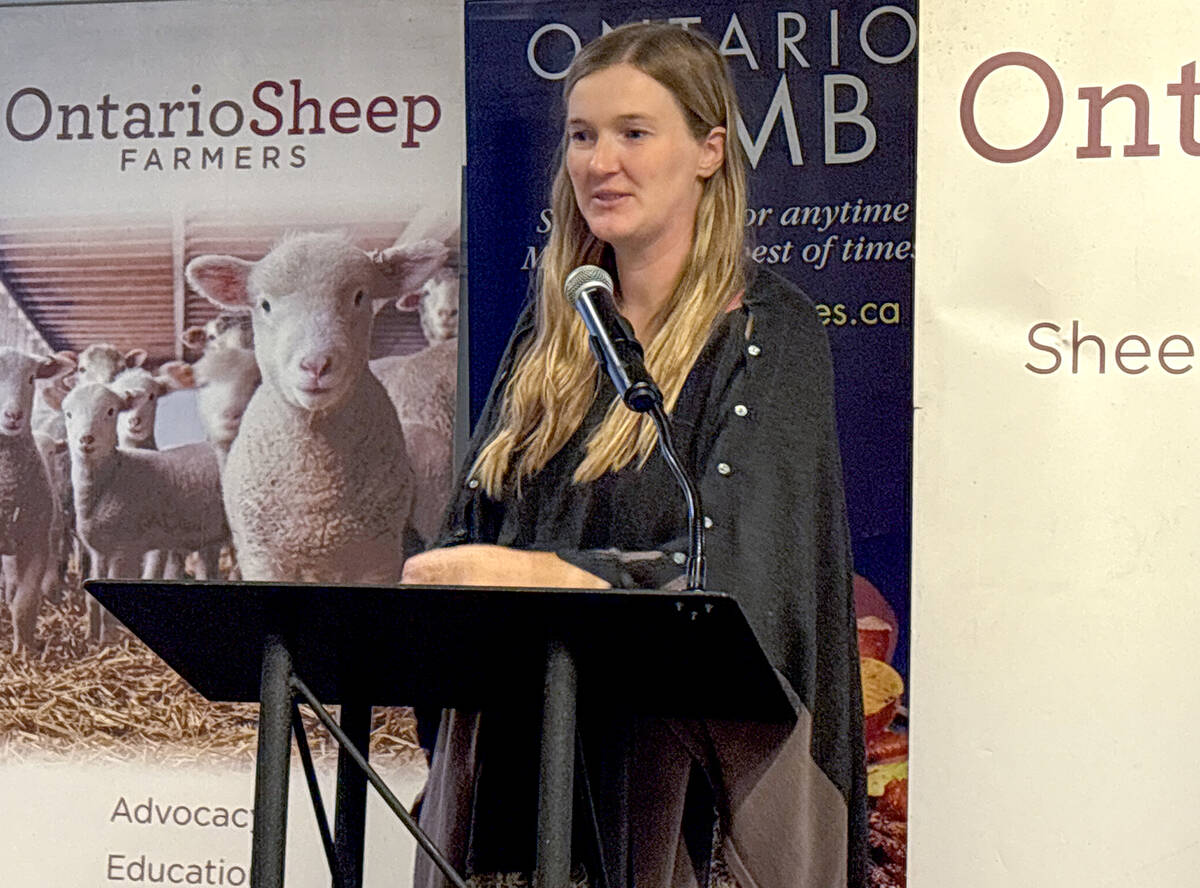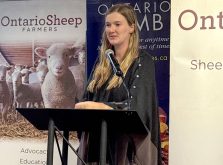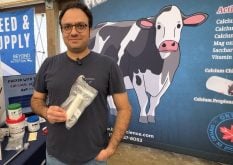Bill McCutcheon ran his hand from a lamb’s withers to its rump and explained its marketability.
“We want to be able to assess them on the rib and make sure that they’re not too fat, but have enough cover that the carcass is going to be preserved, be protected in the cooler,” said the producer and lamb merchandiser for Ontario Lamb Marketing Inc.
Why it matters: An ideal market-ready lamb has thickness in the shoulder, rack, loin and leg.
Read Also

Footflats Farm recognized with Ontario Sheep Farmers’ DLF Pasture Award
Gayla Bonham-Carter and Scott Bade, of Footflats Farm, win the Ontario Sheep Farmers’ 2025 DLF Ontario Pasture Award for their pasture management and strategies to maximize production per acre.
Lambs for McCutcheon’s market-ready demonstration at Canada’s Outdoor Farm Show were on the heavier end of OLM specifications but showed a range in marketability.
“(These are) 110 to 115-pound lambs that are going to dress in that 23 to 26 kilo range,” he said.
OLM’s lamb specifications allow up to 20 millimetres of fat before facing a penalty, and weights of 20 to 25 kilograms with a cap of 27 kilograms for ideal consumer products.
“It’s a pretty specific range we’re looking for, which is different than a lot of packers. We don’t pay more for lambs that are overweight. On small lambs, you really can’t break them up; you can’t make money doing that.”
McCutcheon is concerned about producers’ lack of insight on lamb quality and carcass yield.
The farm show demonstration was a continuation of lamb marketing education he and Wahab Samani of Simcoe Street Meats began at the Ontario Sheep Farmers’ annual meeting last October. There, they shared video and data collection from the 2023 carcass competition lamb evaluation.
McCutcheon said elevating producer knowledge can help maximize returns through simple management changes.
For example, most demonstration attendees seemed surprised that ewe lambs dress two to three per cent better and can be marketed lighter for the same quality as ram lambs.
“Ninety-five per cent of the lambs in the province are sold live, and there’s no report back,” he said, adding that this costs producers and benefits packing industry players.
He pointed to New Zealand’s and Australia’s sheep industry, which have a specification grading system for product consistency like almost any livestock processed across North America, and a producer report card to track progress.
Ontario’s sheep industry does not, so producers who sell into the live market don’t know why they get a good price or don’t.
McCutcheon believes a similar grading system would increase competitiveness for Ontario sheep producers, reduce waste and boost retail confidence through a consistent, quality product.
“You don’t want to be producing a bunch of lamb that’s way too fat and hard to merchandise,” he said. “That just backs up the whole industry, and we need to be able to move the product we produce.”















